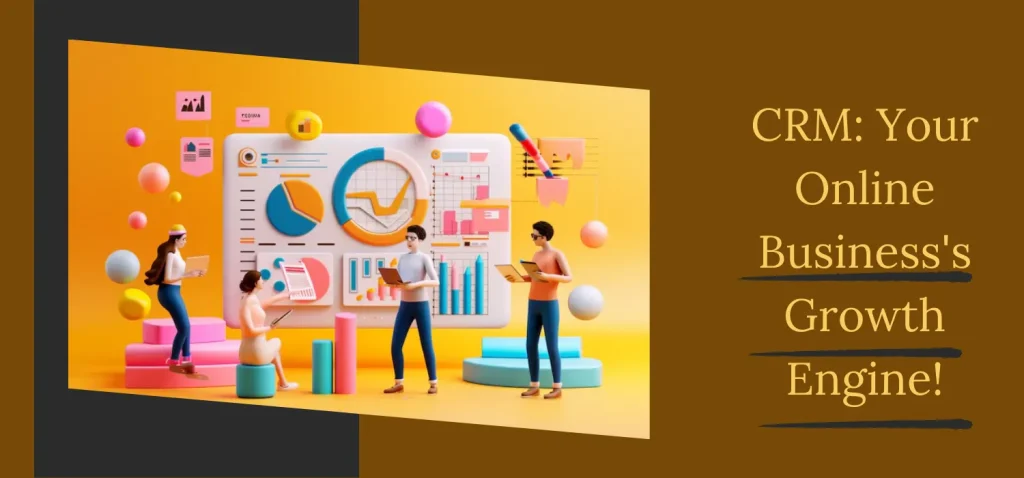
First of all, let’s talk about SEO and what it is.
SEO stands for Search Engine Optimizations. SEO is the practice of making your website/blog more prompt to pop up in the search results. SEO helps increase traffic on your website/blog. The website/blog that is SEOed will bring in more traffic. More Traffic means more people will provide you with business. The algorithms that are used in search engines are designed to provide efficient search results to the user.
SEO can be very helpful for marketing and growing your business. Having the right content and using the keywords that best describe your business will bring more traffic. It can be broken down into three parts that are
-
Quality of Traffic
- People looking for genuine content/product/information.
-
Quantity of traffic
- Attracting more traffic for the things that you are providing.
-
Organic Results
- The traffic which you don’t have to pay for.
Importance of SEO in New Website
SEO can be very important for a website that is new in the market. As there is a lot of competition, SEO plays an important role in bringing the site up. As nowadays people only rely on the results of search engines that help them find anything that they are looking for. This means that no matter what your business offers, the target audience will only search for products/services the same as yours on search engines.
Building Brand
- A new website won’t get business immediately so for that you need to reach out to the users who are looking for the products and services that you provide.
- Make people aware by best describing your brand and the products/services you provide.
- Use the content relevant.
- Use multiple keywords that lead to your website.
SEOed website
- A website that is SEOed will get more traffic.
- SEOed websites have high-ranking
- High ranking means to have your page shown on more search results.
Trust & Credibility
- Make your targeted audience trust by providing them with exactly what they are looking for.
- Keep your user navigation clean so they feel confident visiting your website.
- Establish authority so your brand looks authentic.
SEO to Improve website
- Follow the new trends in the market.
- Improve your user experience using information like what the users look for.
Keywords
- Use multiple combinations of keywords that best suit your content.
- More keywords will improve the ranking of your website.
- The keywords should best describe what you’re offering.
On-page SEO
On-page SEO means optimizing every web page of your website to match and show on the search results to bring the ranking up. In on-page SEO the content and the HTML source code both are referred which can be optimized. The search engines are smarter nowadays but still use the traditional keyword search method. The keywords that you use on your pages will show on more pages. Not just the keywords other factors also need to be taken care of for on-page SEO like
- User Experience
- Loading speed of the page
- Click-through-rate
- Rate of Bounce
- Intent of search
Off-Page SEO
The SEO activities that you perform that are not related to or done on a website are called Off-page SEO. Activities like social media, link building, local marketing, and local SEO. Having the same task but done in different ways. Tasks that have an impact on the ranking and traffic of the website. There are other ways to build trust among users and make them aware of our brand. Ways like
- Social Media Marketing
- Link building
- Guest Blogging
- Influencer Marketing
- Local Marketing
New Website SEO Tips and Tricks

Keyword Research
When you start a new website, one of the first things to do is keyword research. Keywords are the terms people enter into search engines like Google to find information. To find the best keywords, use tools like Google Keyword Planner, SEMrush, or Ahrefs. These tools help you understand what people are searching for in your industry. Choosing the right keywords is crucial because it helps you reach the right audience.
On-Page Optimization
Once you have your keywords, you need to use them on your website. This process is called on-page optimization. Make sure your keywords appear naturally in your articles and other content. It’s important to include your main keyword in the title and meta description of each webpage. Also, use it in headings like H1, H2, and so on. This assists search engines in comprehending the content and purpose of your page.
Mobile Optimization
Nowadays, many people use their smartphones to browse the internet. That’s why your website should be easy to use on mobile devices. This is called mobile optimization. Google likes websites that work well on phones, so web designers need to think about mobile users first. A mobile-friendly site is simpler and adjusts well to different screen sizes.
Site Structure and Navigation
A good website should be easy for both people and search engines to navigate. This means organizing your site in a way that makes sense. Use clear URLs that describe each page. Breadcrumb navigation—where users can see where they are on the site—and internal links between pages also help. This improves the user experience (UX) and makes visitors stay longer on your site.
Page Speed Optimization
When visitors come to your site, it should load quickly. Page speed is not only important for users but also affects your SEO ranking. To improve your site’s speed, you can compress images so they load faster, minimize CSS and JavaScript files, use browser caching, and consider using a content delivery network (CDN).
Quality Content Development
Content is king when it comes to SEO. Create high-quality content that’s relevant and useful for your audience. This encompasses various types of content such as blog posts, articles, videos, and infographics. Updating your content regularly keeps visitors coming back and improves your site’s authority.
Commendable Backlink Building
Backlinks are links from other websites to yours. Having quality backlinks from reputable sites in your industry shows search engines that your site is trustworthy. You can build backlinks through guest posting, influencer marketing, and sharing your content on social media. This enhances your site’s position in search engine results.
Local SEO Optimization
If your business serves local customers, focus on local SEO. It means adjusting your website so it shows up in searches made within your local area. Create a Google My Business page and include location-based keywords in your content. This helps local customers find you when they search for services in their area.
Schema Markup
Schema markup assists search engines in understanding your content more effectively. It adds extra information to your search results, like reviews, recipes, or events. Using schema markup can improve your click-through rate and make your site stand out in search results.
Regular Monitoring and Analysis
To see how well your SEO strategies are working, use tools like Google Analytics and Google Search Console. Monitor important metrics like organic traffic, keyword rankings, bounce rates, and conversion rates. Analyzing this data helps you adjust your SEO strategy and improve your site over time.
By following these tips and techniques, you can improve your website’s visibility and authority in search engine rankings. This leads to more organic traffic and helps you achieve your business goals.
What Makes a Good SEO Website?

A good SEO website has several key components that help it rank well in search engines and provide a great user experience.
Quality Content
High-quality content plays a crucial role in a successful SEO strategy. Your content should meet the needs of your audience and provide value. It should also include relevant keywords naturally to improve its visibility in search results.
Keyword Optimization
Using keywords strategically is important for SEO. Keywords should be included in page titles, headings, meta descriptions, and throughout your content. However, they should be used naturally and not disrupt the flow of your content.
User-Friendly Design
A good website design considers both search engines and users. It should be easy to navigate, with intuitive layouts and fast loading times. A good user experience keeps visitors on your site longer, which can improve your search engine rankings.
Clear URL Structure Optimization
URLs should be clear and descriptive, giving users and search engines an idea of what the page is about. Including relevant keywords in URLs can also improve your site’s SEO.
Images and Multimedia Optimization
Optimizing images and multimedia content is important for SEO. Use descriptive file names, alt tags, and captions to help search engines understand your visuals. Optimized images also improve accessibility for users.
Internal Linking
Internal linking aids search engines in discovering and indexing your content. It also creates a logical structure within your site and distributes link equity. This improves SEO and enhances the user experience by guiding visitors to related content.
Responsive and Mobile-Friendly Design
With more people using mobile devices, having a responsive and mobile-friendly website is crucial for SEO. Responsive design ensures your site looks good and functions well on any device, improving user experience and search engine rankings.—
Fast Loading Speed
Pages that load quickly provide a better experience for users and can rank higher in search results. Optimize your site’s speed by reducing HTTP requests, optimizing images, enabling browser caching, and using a content delivery network (CDN).
Secure HTTPS Connection
Using HTTPS encryption not only improves security for users but also boosts your SEO rankings. It shows visitors that your site is safe to browse. Implementing SSL/TLS certificates and moving to HTTPS can have a positive impact on your site’s visibility in search results.
Regular Monitoring and Optimization
SEO is an ongoing process that requires continuous monitoring and optimization. Regularly monitor metrics like traffic, rankings, and conversions using tools like Google Analytics. Use this data to make informed decisions and keep improving your SEO strategy.
By focusing on these elements, your website can climb higher in search engine results, attract more organic traffic, and grow your business through effective SEO practices.
Aarchi Infotech Solutions (AIS), Australia provides all the solutions for SEO with other services. AIS can get all the work done for you while you watch them do the magic on your website and bring up the ranking to help boost your business. Contact AIS now for your business growth.



